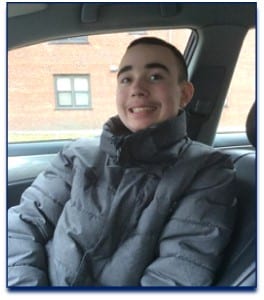
ITS NOT REALLY that hard to fix a child welfare system: just listen to your gut instinct – and do the opposite.
Gut instinct says: David Almond died a horrible death though he was wellknown to the Department of Children and Families and other agencies. So the solution must be to take away children more quickly and return them to their homes more slowly – if at all.
Except, of course, that’s exactly what the state did after the deaths of Bella Bond and Jeremiah Oliver. The high-profile tragedies set off a foster-care panic, a sharp sudden increase in the number of children torn from their families, in a state that has taken away children at rates well above the national average for decades.
As I saw decades ago, when I was a reporter in Springfield, it’s a cycle that has repeated itself since the days before DCF was split off from what was then the Department of Social Services (which was supposed to fix everything) and the days when DSS was split off from what was then the Department of Public Welfare (which was supposed to fix everything).
But Gov. Charlie Baker and his DCF director, Linda Spears, learned nothing from this cycle. They compounded the problem, embracing the false claim that child safety and family preservation are opposites, and efforts to keep families together supposedly endanger children.None of this, of course, stopped the most recent tragedy – or all the other deaths of children known-to-the-system that haven’t gotten the same attention. It hasn’t worked anywhere else it’s been tried either. Because the real reason for child abuse tragedies has nothing to do with efforts to keep families together. Understanding what’s really at play requires understanding who’s really in the system and why.
The overwhelming majority of cases seen by DCF caseworkers are nothing like the horror stories.
Pore through the federal government’s annual Child Maltreatment report and you find that nationwide, 91 percent of all calls to child abuse hotlines are either so absurd they’re screened out or are found to be false after they’re investigated – even though little more than a caseworker’s guess is enough to “substantiate” an allegation. Another 6 percent involve neglect. As the Almond case makes clear, neglect can be horrific. But far more common are cases in which a family is simply poor. Multiple studies have found, for example, that 30 percent of America’s foster children could be home right now if their parents simply had decent housing.
Because the typical cases are nothing like the horror stories, it’s no wonder that multiple studies, two of them from MIT, massive in size and scope, involving more than 15,000 typical cases, found that children left in their own homes typically fared better even than comparably-maltreated children placed in foster care.
Although DCF caseworkers almost always mean well, the trauma endured by a child needlessly torn from his or her parents is no different when it happens in Massachusetts than when it happens on the Mexican border.
That harm occurs even when the foster home is a good one. The majority are. But the rate of abuse in foster care is far higher than generally realized and far higher than in the general population. Multiple studies have found abuse in one-quarter to one-third of foster homes. The rate of abuse in group homes and institutions is even worse. Just this year, the Philadelphia Inquirer exposed alarming examples of abuse in institutions run by Devereux, the giant chain of residential treatment centers that housed the Almond children. A Devereux vice president called it “an industry-wide problem.”
That brings us to the real reason for most high-profile child abuse tragedies: The more that workers are overwhelmed with false allegations, trivial cases, and children who don’t need to be in foster care, the less time they have to find children in real danger. The case that could become the next horror story is a needle in a haystack. You can’t increase the chances of finding the needless by constantly enlarging the haystack.
And now we have a new twist: It’s claimed that if only we had more “eyes” on children during the pandemic we wouldn’t have these tragedies. But, as the Boston Globe has shown, this very notion has led to the harassment of poor families of color across the Commonwealth.The idea that the lack of mostly white, middle-class “eyes” on overwhelmingly poor disproportionately nonwhite children is leading to a “pandemic of child abuse” has been debunked by major national news organizations such as the Associated Press, The Marshall Project and Bloomberg CityLab and even the child welfare think tank Chapin Hall at the University of Chicago. We should think twice about why we are so quick to accept a narrative that reflects racial and class biases – a narrative that will only further overload DCF workers and make it less likely they’ll find the next child in real danger.
How can Massachusetts break the cycle? For starters, by emphasizing concrete help to ameliorate the worst aspects of poverty and by providing high quality legal defense for families so they challenge the cookie cutter “service plans” offered by DCF.
Child safety and family preservation are not opposites. Family preservation prevents the tragedy of needless removal, makes it easier to weed out bad foster homes and institutions, and frees up worker time to find those needles in the haystack.Richard Wexler is executive director of the National Coalition for Child Protection Reform.
"cycle" - Google News
April 04, 2022 at 09:17AM
https://ift.tt/8Rp6qNY
CommonWealth Magazine - CommonWealth magazine
"cycle" - Google News
https://ift.tt/LvkCNpS
https://ift.tt/XCyFSv7
Bagikan Berita Ini















0 Response to "CommonWealth Magazine - CommonWealth magazine"
Post a Comment